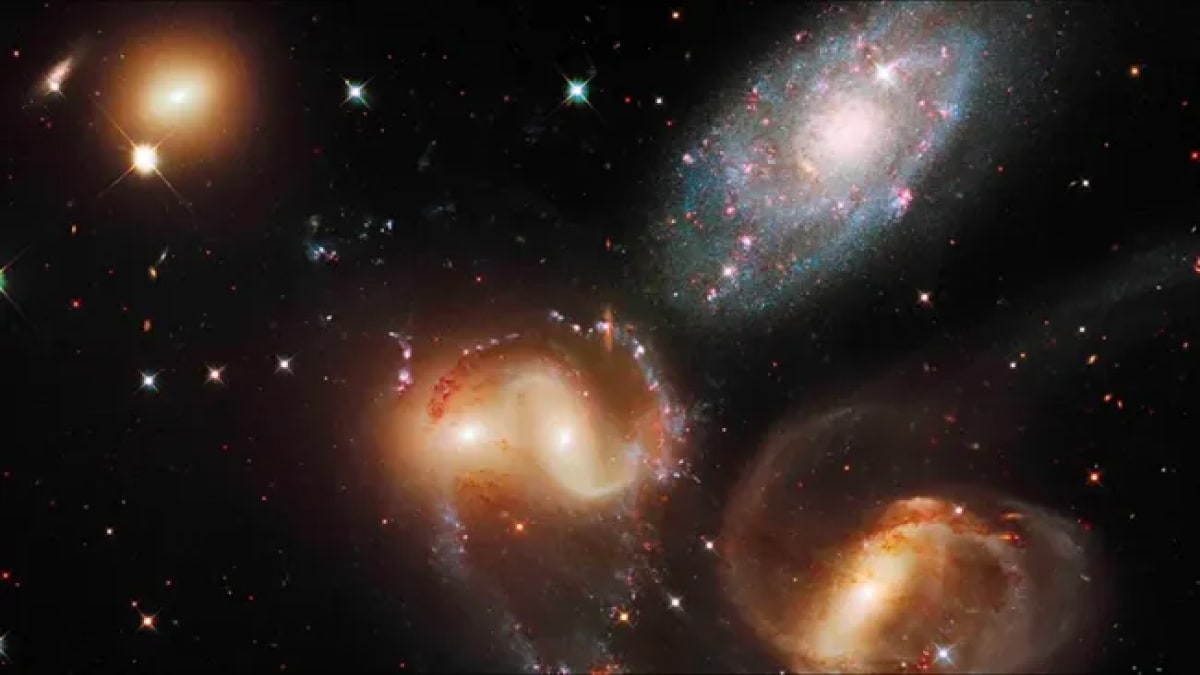
One of the most intense cosmic shockwaves has been observed in Stephan’s Quintet, a group of galaxies located approximately 290 million light-years from Earth. The event was triggered by the galaxy NGC 7318b colliding with four neighbouring galaxies at an estimated velocity of two million mph (3.2 million kmph). The collision produced a shock front likened by researchers to the sonic boom of a jet fighter. These findings, which could illuminate the complex processes shaping galaxies, have been published in Monthly Notices of the Royal Astronomical Society.
Stephan’s Quintet and the Collision’s Impact
Stephan’s Quintet, named after 19th-century French astronomer Édouard Stephan, consists of five galaxies engaged in a series of gravitational interactions. The latest collision involved NGC 7318b slamming into the system, creating a turbulent debris field, as per a Science Live report.
Dr Marina Arnaudova, an astrophysicist at the University of Hertfordshire, told the publication that the aftermath as “a massive intergalactic field of plasma and gas debris re-energised by the collision.” According to her, this activity has illuminated the plasma at radio frequencies and may have initiated star formation in the region.
Observations and Research Techniques
The event marked the first use of the WEAVE spectrograph, mounted on the William Herschel Telescope in La Palma, Spain. By analysing light from the system, researchers tracked debris patterns, ionised gas trails, and nascent stars stirred by the shockwave. These findings are anticipated to provide insights into the role of collisions in the formation and evolution of galaxies.
Implications for Understanding Galactic Evolution
The violent encounter within Stephan’s Quintet offers a rare opportunity to observe galaxy collisions in real-time. Researchers have indicated that such interactions, which were frequent during the universe’s early history, significantly shaped the galaxies observed today. While the ultimate outcome of this particular collision may not occur for billions of years, the data gathered is expected to enhance understanding of processes linked to the formation and merging of galaxies.
This research highlights the dynamic and often chaotic nature of the universe, providing astronomers with vital information on the interconnected evolution of stars, galaxies, and cosmic phenomena.


